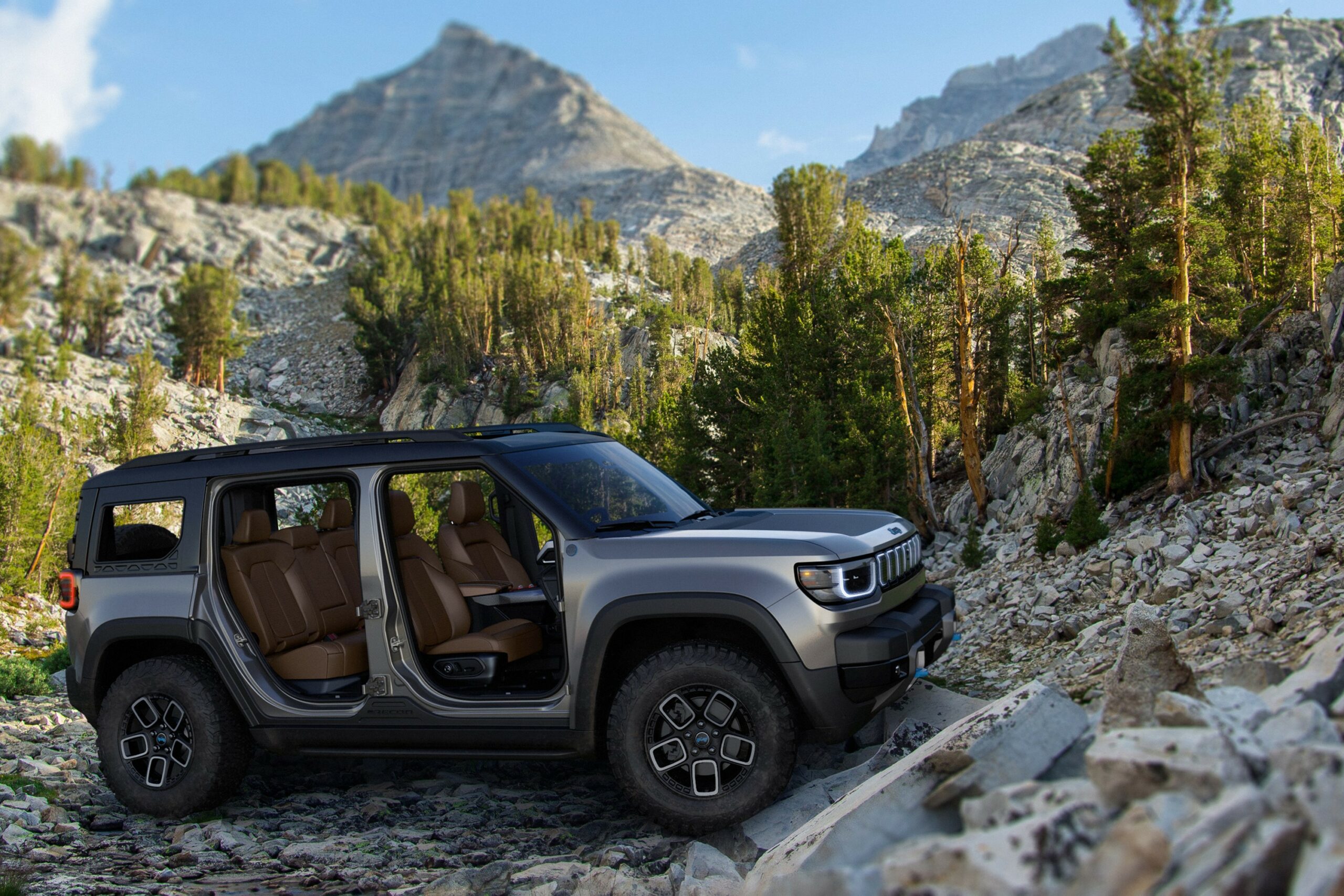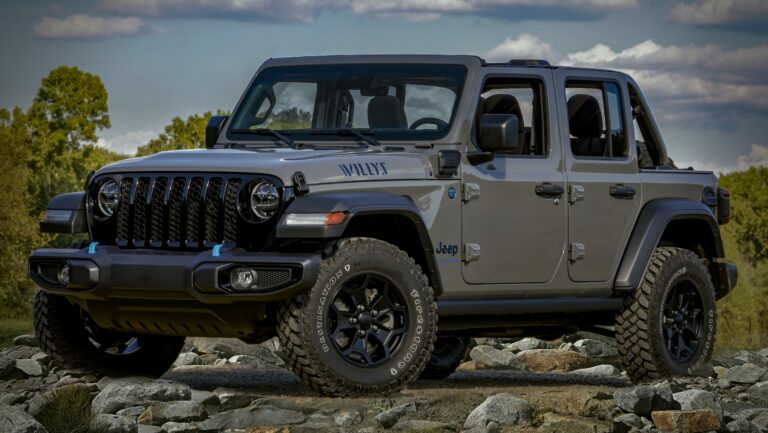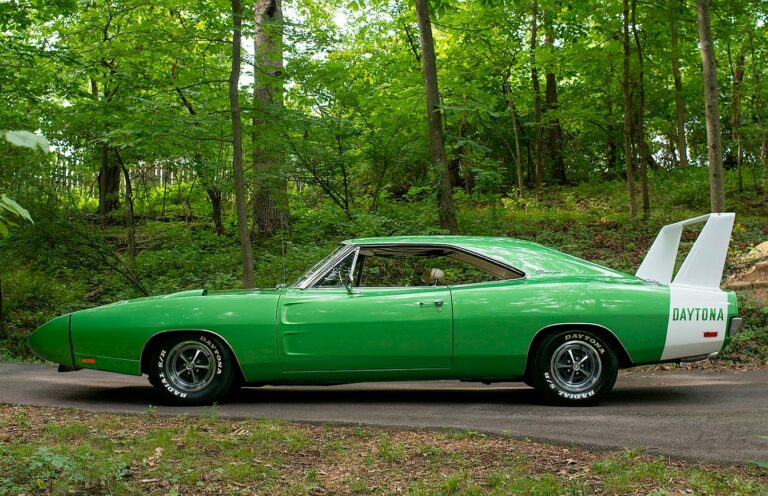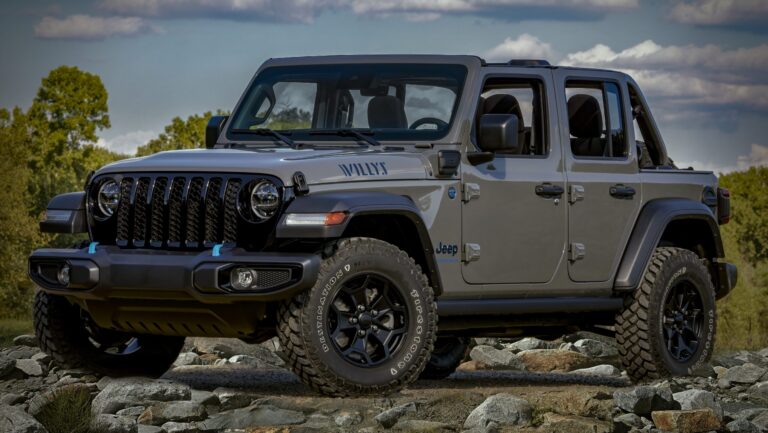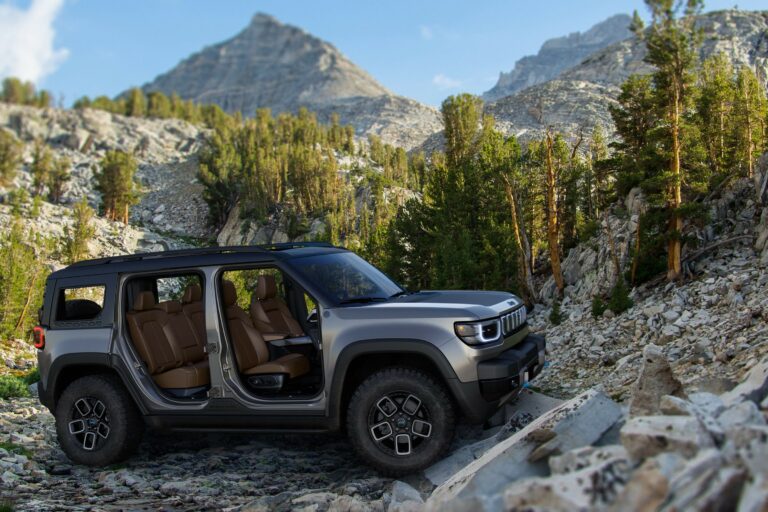Jeep CJ Frame For Sale: The Foundation of Your Off-Road Dream
Jeep CJ Frame For Sale: The Foundation of Your Off-Road Dream jeeps.truckstrend.com
The Jeep CJ, an icon of American automotive history, holds a special place in the hearts of off-road enthusiasts and classic vehicle collectors alike. Known for its rugged simplicity, unparalleled go-anywhere capability, and timeless design, the CJ series (including the CJ-5, CJ-7, and CJ-8 Scrambler) remains highly sought after for restoration, custom builds, and dedicated trail rigs. At the very core of every Jeep CJ’s legendary durability and performance lies its robust ladder frame chassis. However, decades of exposure to harsh elements, demanding off-road abuse, and the inevitable march of time often leave these critical components compromised by rust, fatigue, or damage. This is where the quest for a "Jeep CJ Frame For Sale" begins – a crucial undertaking for anyone looking to resurrect, repair, or reimagine their beloved classic Jeep.
Acquiring a solid, uncompromised frame is arguably the most fundamental step in any significant CJ project. It dictates the structural integrity, safety, and ultimate lifespan of the vehicle. Whether you’re planning a meticulous frame-off restoration to concourse standards, building a custom rock crawler from the ground up, or simply replacing a dangerously corroded original, understanding the intricacies of purchasing a CJ frame is paramount. This comprehensive guide will navigate you through everything you need to know about finding, inspecting, buying, and even installing a Jeep CJ frame, ensuring your investment forms a strong foundation for your ultimate Jeep vision.
Jeep CJ Frame For Sale: The Foundation of Your Off-Road Dream
Why Buy a Jeep CJ Frame? The Cornerstone of Any Serious Project
The decision to purchase a standalone Jeep CJ frame is typically driven by one of several compelling reasons, each highlighting the frame’s critical role in the vehicle’s overall health and performance:
- Frame-Off Restoration: For purists and restorers aiming for a show-quality vehicle, a new or meticulously refurbished frame is non-negotiable. Original frames, even if seemingly sound, often hide structural weaknesses, pitting, or previous sub-standard repairs that only become apparent after media blasting. A clean, straight frame allows for proper body alignment and a pristine finish.
- Repairing Severe Damage: Accidents, prolonged exposure to road salt, or extreme off-road punishment can cause severe frame damage such as bends, twists, or extensive rust perforation that is beyond economical or safe repair. In such cases, replacing the entire frame is the safest and most practical solution.
- Custom Builds and Swaps: Many enthusiasts opt to build highly modified CJs for specific purposes like extreme rock crawling, desert racing, or unique street applications. Starting with a bare frame provides a clean slate for custom suspension setups, engine swaps, and drivetrain modifications without compromising the integrity of an existing, potentially damaged, vehicle.
- Salvaging a "Basket Case" Jeep: Often, a donor CJ might have a decent body, axles, or drivetrain components but a completely rotted-out frame. Purchasing a separate frame allows you to combine the good parts from a donor vehicle with a solid foundation, bringing an otherwise unsalvageable project back to life.
- Long-Term Durability and Safety: A solid, uncompromised frame ensures the vehicle’s structural integrity, contributing directly to occupant safety and predictable handling. Investing in a quality frame means peace of mind for years to come.

Types of Jeep CJ Frames Available: New, Used, and Custom
The market for Jeep CJ frames offers a variety of options, each with its own set of advantages, disadvantages, and price points:
1. Used Original Frames
- Description: These are frames salvaged from existing Jeep CJs, either from donor vehicles, salvage yards, or private sales.
- Pros:
- Authenticity: They retain the original factory specifications and mounting points, making them ideal for purist restorations.
- Cost-Effective (Potentially): Can be significantly cheaper than new frames, especially if found locally.
- Cons:
- Condition Varies Widely: Most used frames will have some degree of rust, dents, or previous repairs. Thorough inspection is crucial.
- Hidden Damage: Rust can be extensive inside the frame rails, and past collisions might have caused subtle bends that are hard to detect without specialized tools.
- Labor Intensive: Requires significant cleaning, rust removal, inspection, and often reinforcement or repair before use.
- Where to Find: Online marketplaces (eBay, Facebook Marketplace), local salvage yards, specialty Jeep wrecking yards, enthusiast forums, private sellers.
2. New Reproduction Frames (Aftermarket)
- Description: These are brand-new frames manufactured by aftermarket companies designed to replicate the original CJ frame.
- Pros:
- No Rust or Damage: Arrive in pristine condition, requiring no rust removal or repair.
- Improved Materials/Design (Sometimes): Some manufacturers use thicker steel, better welding techniques, or add strategic reinforcements. Many come powder-coated for enhanced durability.
- Direct Fit: Designed to accept original CJ body tubs, suspension components, and drivetrains with minimal modification.
- Longevity: Built to last, offering a fresh start for your project.
- Cons:
- Higher Cost: Significantly more expensive than used frames.
- Shipping Costs: Due to their size and weight, freight shipping can add substantially to the overall price.
- Popular Manufacturers: Omix-ADA, Quadratec (often re-selling frames from other manufacturers), and several smaller specialized fabricators.
3. Custom Fabricated Frames
- Description: Frames built from scratch by specialized fabrication shops, often incorporating custom designs for extreme off-road use or unique builds.
- Pros:
- Ultimate Strength and Customization: Can be built to withstand specific stresses, incorporate custom suspension mounting points, or accommodate unique engine/drivetrain setups.
- Tailored to Your Vision: Every aspect can be designed to your exact specifications.
- Cons:
- Most Expensive: Requires highly skilled labor and specialized equipment.
- Not for the Average Builder: Usually reserved for high-end, purpose-built vehicles.
- Potential for Fitment Issues: May require more custom fabrication for body and component mounting.
- Where to Find: Specialized off-road fabrication shops, custom chassis builders.
Key Considerations When Purchasing a CJ Frame
Regardless of the type of frame you choose, several critical factors must be thoroughly evaluated before making a purchase:
- Condition (for Used Frames): This is paramount.
- Rust: Inspect everywhere. Pay close attention to common rust points: body mounts, spring perches, skid plate areas, rear crossmember, and especially the inside of the frame rails (use a borescope if possible). Heavy pitting or perforation indicates severe compromise.
- Bends and Cracks: Look for any signs of impact, stress, or previous poor repairs. Check the frame rails for ripples, kinks, or distortions. Pay attention to areas around suspension mounts and steering box. A straight edge or string line can help detect subtle bends.
- Previous Repairs: Examine welds carefully. Are they clean and professional, or appear "globby" and amateurish? Poorly executed welds can be weaker than the original material.
- Straightness/Squareness: This is crucial for proper alignment, handling, and body fitment. If possible, measure diagonally from corner to corner; the measurements should be identical.
- Compatibility:
- Model: CJ-5, CJ-7, and CJ-8 (Scrambler) frames are different lengths. Ensure the frame matches your intended vehicle or be prepared for significant modifications.
- Year-Specific Variations: While CJs generally share a similar frame design, subtle differences exist between early and late models (e.g., narrow track vs. wide track axle mounts, some crossmember designs). Research your specific year and model.
- Drivetrain Mounts: While engine and transmission mounts can often be modified, it’s easier if the frame’s existing mounts are compatible with your planned drivetrain.
- Material and Coating (for New Frames):
- Steel Gauge: Inquire about the thickness (gauge) of the steel used. Thicker steel generally means more strength.
- Protective Coating: Many new frames come powder-coated, which offers excellent long-term corrosion protection. Some may be bare steel, requiring you to apply your own coating.
- Legality and Documentation:
- VIN: While the VIN on a CJ is typically associated with the body, some frames (especially those from complete donor vehicles) may have stamped VINs. Understand your local Department of Motor Vehicles (DMV) requirements regarding frame swaps and titling. Always get a bill of sale.
- Shipping and Logistics: Frames are large, heavy, and awkward to transport. Factor in freight shipping costs, which can be substantial, or arrange for pickup if buying locally. You’ll need appropriate equipment to unload and move it.
The Buying Process: Where to Look and How to Inspect
Finding the right Jeep CJ frame requires diligence and a keen eye.
Where to Look:
- Online Marketplaces: Websites like eBay, Craigslist, and Facebook Marketplace are popular for private sellers. Be cautious and always request detailed photos and information.
- Specialty Jeep Parts Dealers: Companies specializing in vintage Jeep parts often stock new reproduction frames and sometimes used ones.
- Salvage Yards/Junkyards: Local yards can be a treasure trove, but you’ll need to inspect in person.
- Online Forums and Communities: Dedicated Jeep CJ forums (e.g., JeepForum.com, Pirate4x4.com) often have "for sale" sections where members sell parts.
- Word of Mouth: Let fellow enthusiasts know you’re looking; the Jeep community is often very helpful.
How to Inspect a Used Frame (Crucial Steps):
- Bring the Right Tools: A bright flashlight, a small hammer (to tap for thin spots/rust), a wire brush, a tape measure, and a straight edge.
- Clean it Up: If possible, clean off mud, dirt, and loose rust to get a clear view of the metal.
- Visual Inspection (Overall): Step back and look at the frame as a whole. Does it look straight? Are there any obvious twists or bends?
- Rust Check:
- Exterior: Scrape away surface rust to check for pitting. Pay close attention to areas where water collects: body mounts, skid plate mounts, spring perches, and especially the rear crossmember and the bottom of the frame rails.
- Interior: Use your flashlight to look inside the frame rails. Rust can propagate from the inside out. Tap suspect areas with a hammer; a dull thud or a hole forming indicates severe rust.
- Structural Integrity:
- Welds: Examine all factory welds and any previous repair welds. They should be uniform and clean, not "globby" or cracked.
- Cracks: Look for hairline cracks, especially around stress points like suspension mounts, steering box mounts, and crossmember attachment points.
- Bends/Kinks: Look along the top and bottom flanges of the frame rails for any ripples or kinks, which are tell-tale signs of a collision or severe impact.
- Measure for Straightness:
- Diagonal Measurements: Measure from one front corner (e.g., front passenger spring perch) to the opposite rear corner (e.g., rear driver spring perch). Then, measure the other diagonal. These two measurements should be identical, or very close, indicating the frame is square.
- Parallelism: Measure the width of the frame at several points along its length. These should be consistent.
- Ask Questions: Inquire about the donor vehicle’s history, why the frame is being sold, and any known issues. Request detailed photos if buying remotely.
Installation and Beyond: What to Expect
Once you’ve acquired your Jeep CJ frame, the real work begins. Frame swaps are significant projects requiring mechanical aptitude, space, and a good set of tools.
- Disassembly: If replacing an existing frame, you’ll need to carefully remove the body, drivetrain (engine, transmission, transfer case), axles, suspension components, steering, and fuel tank from the old frame. Document everything with photos.
- Preparation: Clean and prep your new frame. If it’s a used frame, this involves thorough rust removal (media blasting is ideal), inspection, and any necessary repairs or reinforcements. For new frames, you might still want to apply an additional protective coating (e.g., POR-15, epoxy primer, topcoat paint) for maximum longevity.
- Assembly: This is essentially building the Jeep from the ground up. Start with axles and suspension, then the drivetrain, and finally, carefully lower the body onto the new frame.
- Challenges:
- Seized Bolts: Expect many rusted and seized bolts, especially on older components. Have penetrating oil, a grinder, and a cutting torch ready.
- Alignment: Ensuring proper alignment of body mounts, suspension components, and drivetrain can be challenging.
- Unexpected Rust/Damage: While the frame might be good, other components (body tub, fenders, etc.) might reveal hidden rust once removed.
- Logistics: Moving heavy components like the body and drivetrain requires an engine hoist, sturdy jack stands, and often extra hands.
- Tips:
- Organization: Label and bag all hardware as you remove it.
- Anti-Seize: Use anti-seize compound on all bolts during reassembly to make future work easier.
- Patience: This is a marathon, not a sprint. Take your time and enjoy the process.
- Resources: Utilize online forums, repair manuals, and YouTube tutorials for guidance.
Jeep CJ Frame For Sale: Estimated Price Guide
Prices for Jeep CJ frames can fluctuate significantly based on condition, type, manufacturer, and market demand. The table below provides a general estimate.
| Frame Type/Condition | Estimated Price Range (USD) | Key Features & Notes
